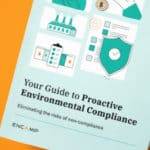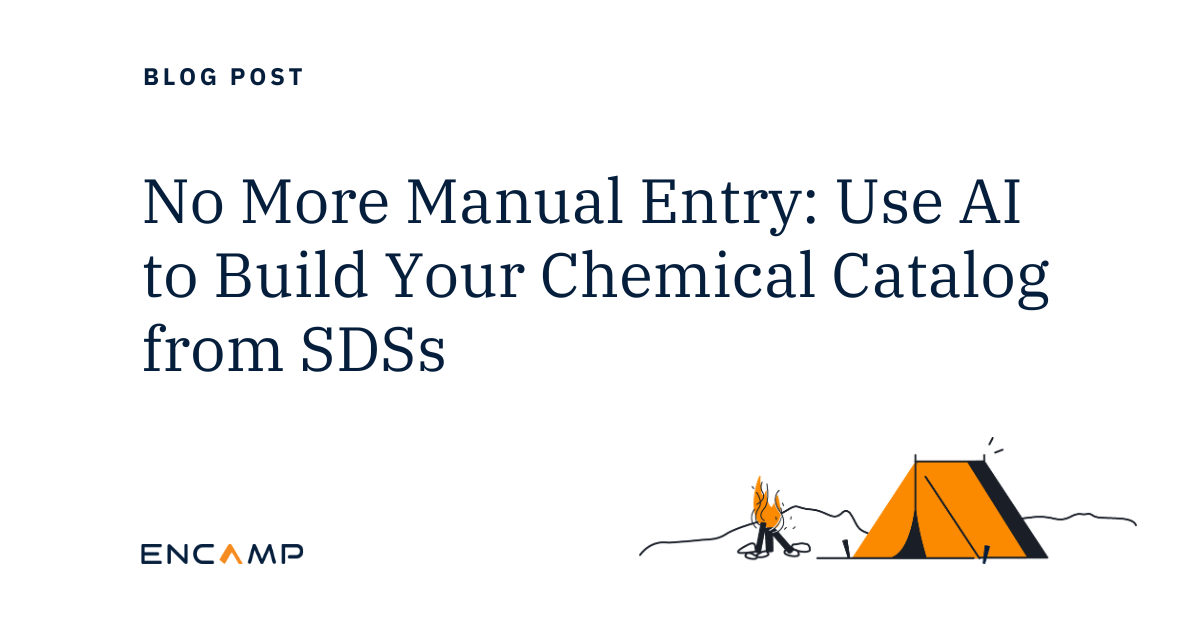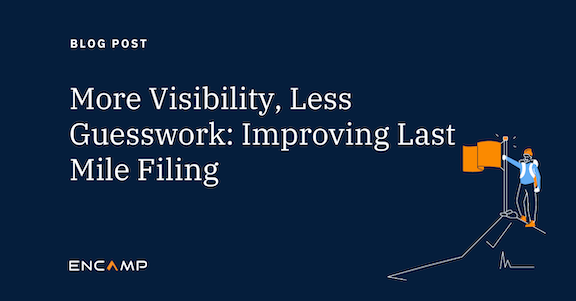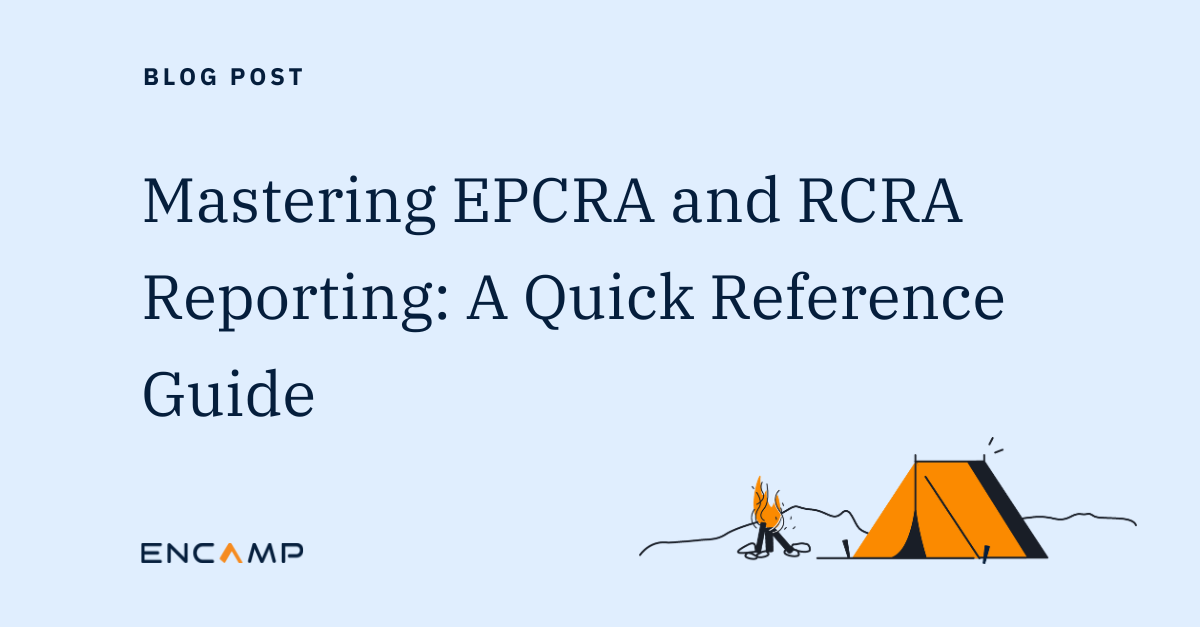Environmental compliance can be complex enough as it is. But it’s worse when businesses and their EHS teams lack standardized, sustainable processes, digitization, and data visibility to track reporting activities across the enterprise.
In the proactive environmental compliance model, as well as a guided environmental compliance approach, data visibility among facilities and EHS, Operations, and corporate teams is essential when preparing Tier II reports for regulations like EPCRA and its applicable Sections. The reasons are many, as are the benefits.
 Download the eBook
Download the eBook
Your Guide to Proactive Environmental Compliance:
Eliminating the risks of non-compliance
Prevent incomplete and inaccurate compliance reporting
First, when compliance data and reporting is transparent, it lessens the chance of information being incomplete or inaccurate. Or both.
Data visibility enables all parties in the reporting process, including the corporate suite, to review information and identify potential reporting risks before they become damaging. Especially for Tier II reports, QA/QC involving various organizational levels promotes data quality and hygiene to more effectively mitigate non-compliance risks.
Next, for preparing reports, the ability to locate and access data easily helps EHS leaders assign and monitor tasks, track projects, and foster collaboration and teamwork. In the scope of proactive environmental compliance, a key aim is to streamline the reporting function via data and process visibility, digitization, and automation.
This in turn enables EHS teams and the business to streamline compliance management overall — which is equally vital to being proactive.
Other advantages of visibility
A single source of truth
When compliance data is centralized and made visible in a single source of truth, it enables an EHS team to more confidently perform tasks across reporting and other compliance functions. As the “source of truth” indicates, information is generally known to be complete, accurate and, subsequently, more trusted.
In this way, data visibility lends to proactive environmental compliance as well as operational excellence in ensuring successful reporting outcomes.
Streamlined task management
Just as visibility is critical for data, it’s equally critical for streamlining processes and data flows throughout an entire organization for compliance purposes. To avoid breakdowns within a process or workflow for reporting, a task or series of tasks should be clear and concise. Also in providing structure, this keeps EHS and Operations directors, facility managers, and other compliance stakeholders on the same page and going in the same direction.
The practice of streamlining tasks additionally supports standardizing processes and making them repeatable across EHS teams and facilities — another key component of proactive environmental compliance.
A single pane of glass
A shared and comprehensive view for something like reporting — especially when the view is a detailed, common dashboard — makes it easier to track and QA/QC the entire process. Technology, specifically in the form of a single environmental compliance software system (such as Encamp), can help EHS teams see into the reporting process to ensure data accuracy, improve collaboration, track reporting statuses and task completions, and meet submission due dates.
Common roadblocks
Hidden information. Visibility is particularly problematic when compliance data lives in different places. People involved in the reporting process might not know where to find information they need, or realize certain info even exists. Data can easily “go dark.” The scenario is similar when consultants gather and control a company’s data for regulatory requirements. Information and critical details can get hidden or lost.
Think of tasks like tracking chemical inventories and determining thresholds for reporting, for instance. Wherever collected data is stored, EHS teams must be able to find it, access it, and analyze it. When they can’t, reports can become magnets for non-compliance violations because the final reporting information is lacking.
Dispersed, decentralized data. Nearly every work task for compliance and reporting is tied to or generates data of some kind. When data isn’t centralized, or visible, it can feel like walking through a maze to get needed information in a timely manner. And when this happens, associated tasks and workflows get dragged down. This is where a single source of truth can be invaluable.
Incomplete data analysis. A common issue for EHS functions is that people can’t always fully review and vet data to confirm that it’s the “right” information. Go back to what we said about data getting QA/QC’d at various levels of an organization. There might also be a lack of metadata needed to give context to the values being reported. Where did data originate, when was it collected, and by whom?
Consultants, and employees outside the EHS realm. This can be a unique situation when data is being collected by someone in the organization who’s outside the EHS realm, or especially when consultants are involved. While outsourced consultants perform valuable tasks to gather information, visibility is crucial. Unfortunately, some (but not all) consultants create black boxes of data that few people outside their circle are allowed to access, limiting the transfer of institutional knowledge across teams.
When compliance reporting data isn’t readily visible, it can make an already laborious task even more labor intensive. Dark or cloudy data, and bad data hygiene, can also lead to human error, mistakes, and heightened risks of non-compliance violations in final reports.
Non-standardized processes. In certain companies, compliance reporting tasks are assigned at the facility level. When they are, it’s typically up to someone in Operations to collect the appropriate data, review it, and submit final reports. Nothing about the process is centralized or standardized across the reporting spectrum. This problem is magnified when the business operates facilities in multiple states.
As importantly, for any additional data QA/QC by regional (or corporate) environmental SMEs, it’s critical that data stays visible all the way to the submission stage. Doing so minimizes the risks of accidental omissions, inaccurate reporting due to version control issues, or missed reporting.
Disconnected and ineffective data management systems. For task and data management, systems such as Environmental Management Information Systems (EMIS) are notoriously difficult to configure and use. Because they are, EMIS adoption rates are generally poor.
The bigger problem is that getting data into and out of an EMIS app or “home grown” systems and spreadsheets can be a massive project in it’s own right. Too often, the outcomes are disconnected data flows and information losing both fidelity and transparency when associated with a specific reporting task.
Guided Environmental Compliance
To guide enterprises and EHS professionals looking to transform their environmental compliance programs via a digital approach, Encamp blends digital transformation technologies and practices, high-tech software, and high-touch expert support in a method we call Guided Environmental Compliance. The method is based on our technology-driven system, which builds the relational database and operating system for environmentally relevant operating data, with digital methods providing the foundation.
Guided Environmental Compliance entails five steps that give structure to complex regulatory programs and build compliance confidence. It also lets enterprises unlock strategic sustainability value by aligning business outcomes with social responsibility.

Learn more about our method
and all five steps in our new eBook,
Guided Environmental Compliance.
Transforming the way enterprises stay in compliance
Encamp is on a mission to create a world where good for business can equal good for the environment. We help enterprises transform compliance programs and human processes into a technology-driven system that lays the foundation for accurate and ongoing environmental compliance through a blended method of intelligent high-tech solutions and high-touch expert support.
Tom Bailey
Tom is the Senior Content Writer at Encamp. And like all other Encampers, he’s in tune with the environment and what happens to it. He’s been writing about creative technology solutions for longer than he cares to admit.

 Download the eBook
Download the eBook


